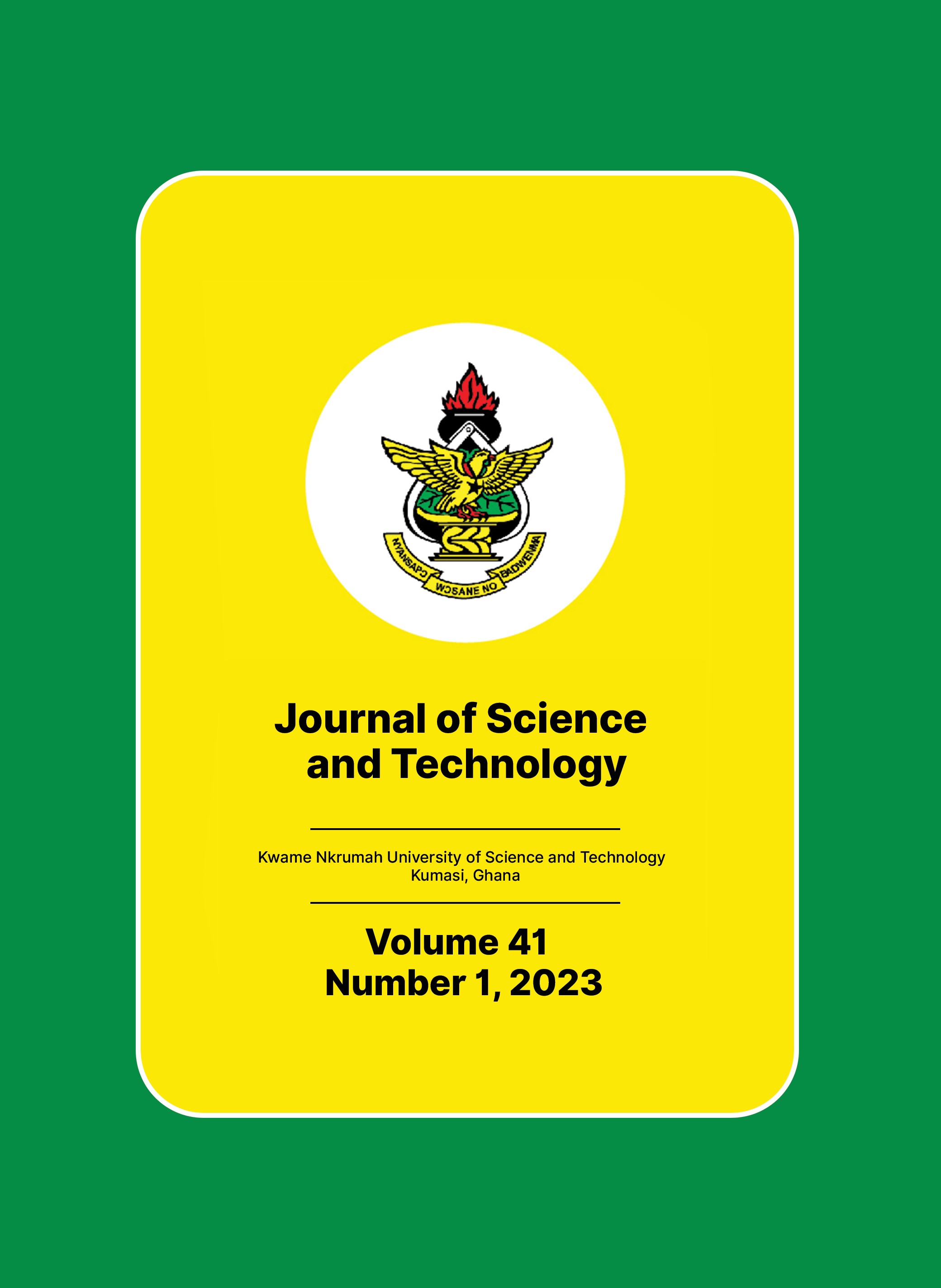Main Article Content
Land Use Land Cover Changes in the Densu River Basin of Ghana from 1991 To 2020
Abstract
The Densu basin has a lot of natural resources and serves as a source of livelihood for millions of people in terms of agriculture, tourism, and employment. The basin has undergone a lot of Land Use Land Cover changes which is caused by deforestation, mining and some agricultural practices. This research assessed the rate, extent, and distribution of LULC in the Densu basin of Ghana from 1991 to 2020. Landsat images for 1991, 2002, 2008, 2014, and 2020 were selected for classification with five LULC classes namely; forest, farmland, grass and shrub, bare land and settlement, and waterbodies. The Random Forest Classification algorithm was used for the classification. A total of 250 ground-truthing samples and image interpretation was used in developing training data. Throughout the study period, forest and farmland decreased by 10.27% and 12.19% respectively. Grassland and shrub, bare land and settlement, and waterbodies increased by 4.8%, 17.19%, and 0.47% respectively. The study revealed that many farmlands and forests have been converted into bare land and settlements as a result of urbanization and most of these locations have grassland and shrubs surrounding them for beautification reasons. Activities like salt and sand winning are implicated in the increase in water because they cause craters that eventually fill with water. The overall accuracy ranged from 92 to 96 with the overall kappa ranging from 0.91 to 0.95 indicating a good classification performance. Knowledge of these LULC changes is of great importance to policymakers for the monitoring and protection of natural resources






